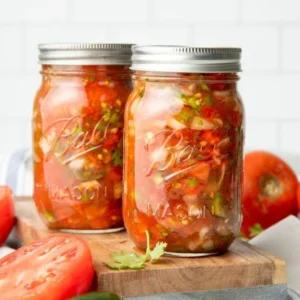Eel sauce, known in Japanese as Unagi no Tare, is a thick, glossy, and deeply flavorful condiment traditionally used on grilled eel (unagi) in Japanese cuisine. Despite its name, eel sauce contains no eel—it’s made from just a handful of ingredients and boasts a rich blend of sweet and salty flavors that perfectly complement sushi, rice dishes, and even grilled vegetables.
Loved for its bold umami taste, caramel-like sweetness, and silky texture, eel sauce has become a favorite in sushi bars and home kitchens around the world. Whether you’re drizzling it over rolls, dipping tempura, or glazing meats, this sauce adds a distinctive Japanese flair to any dish.
Ingredients
Here’s everything you need to make a traditional eel sauce:
-
½ cup soy sauce (low-sodium recommended)
-
½ cup mirin (Japanese sweet rice wine)
-
¼ cup white sugar
-
1 tablespoon sake (optional, for extra depth)
Substitutions:



-
Gluten-free: Use tamari instead of soy sauce.
-
Sugar alternatives: Replace white sugar with honey, maple syrup, or coconut sugar.
-
Alcohol-free: Omit sake and increase mirin slightly.
Step-by-Step Cooking Instructions
Follow these simple steps to make your own eel sauce at home:
-
Combine Ingredients
In a small saucepan, mix soy sauce, mirin, sugar, and sake (if using). -
Heat and Simmer
Place the saucepan over medium heat. Stir until the sugar dissolves completely. -
Reduce the Sauce
Bring the mixture to a gentle boil, then reduce to a simmer. Let it cook for about 12–15 minutes, or until it thickens enough to coat the back of a spoon. -
Cool and Store
Remove from heat and let it cool. The sauce will continue to thicken as it cools. Store in a sealed jar or bottle in the refrigerator for up to 2 weeks.
Avoid These Mistakes:
-
Don’t boil too rapidly—this can burn the sugar and ruin the flavor.
-
Don’t over-reduce—it should be thick, but pourable.
-
Stir occasionally to prevent sticking or scorching.
Pro Tips and Cooking Techniques
-
Strain if Needed: For an ultra-smooth finish, strain the sauce through a fine sieve.
-
Use a Silicone Brush: Perfect for glazing eel or grilled meat evenly.
-
Double Batch: This sauce keeps well, so consider making a larger quantity.
Variations and Customizations
-
Vegetarian/Vegan: This sauce is naturally vegan—just ensure your sugar isn’t processed with bone char.
-
Low-Carb/Keto: Use a sugar substitute like erythritol or monk fruit, and a low-carb soy sauce alternative.
-
Fusion Twist: Add a splash of orange juice or grated ginger for a citrusy zing.
Serving Suggestions
-
Sushi & Rolls: Drizzle over dragon rolls, nigiri, or spicy tuna rolls.
-
Rice Bowls: Use as a finishing sauce for donburi or poke bowls.
-
Grilled Delights: Brush on grilled chicken, tofu, or eggplant.
-
Dipping Sauce: Serve with tempura, dumplings, or fried snacks.
Garnish your dish with sesame seeds, scallions, or a sprinkle of shichimi togarashi for added flair.
Nutritional Information (Per Tablespoon, Approximate)
-
Calories: 35
-
Carbohydrates: 8g
-
Sugars: 7g
-
Protein: 0.5g
-
Fat: 0g
-
Sodium: 450mg
Frequently Asked Questions (FAQs)
1. Is eel sauce made from eel?
No, despite the name, it contains no eel. It’s a vegetarian-friendly sauce.
2. Can I store eel sauce?
Yes! Keep it in a sealed jar in the fridge for up to two weeks. Shake or stir before use.
3. Can I reheat it?
Absolutely. Warm it gently in a saucepan or microwave before serving.
4. Why is my sauce too thin/thick?
Too thin? Simmer a bit longer. Too thick? Add a splash of water or mirin to loosen.
5. Can I freeze eel sauce?
It’s not ideal—freezing can alter texture. Fresh is best, but you can freeze it in small portions.
Closing Thoughts
Eel sauce is a delightful and versatile condiment that transforms ordinary dishes into something spectacular. Once you try making it at home, you’ll never go back to store-bought. Whether you’re a sushi aficionado or a home cook looking to explore Japanese flavors, this simple recipe is a must-try.
Give it a go and let your taste buds travel to Japan! Don’t forget to share your creations or ask any questions in the comments—we’d love to hear from you.



